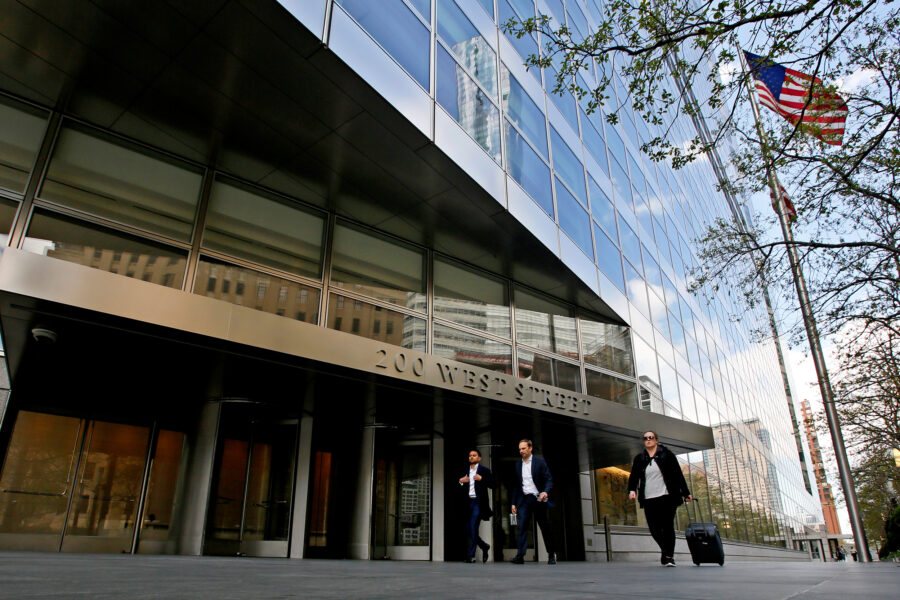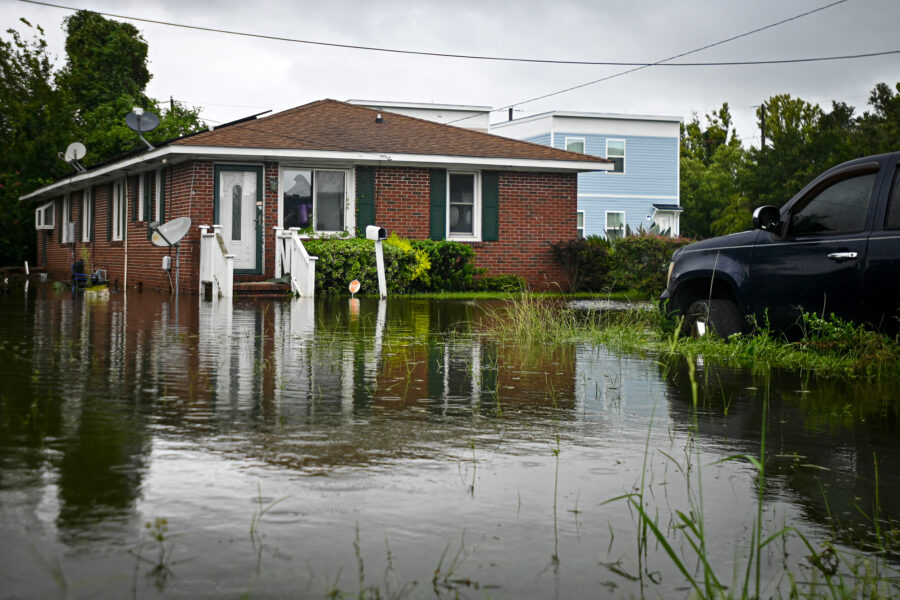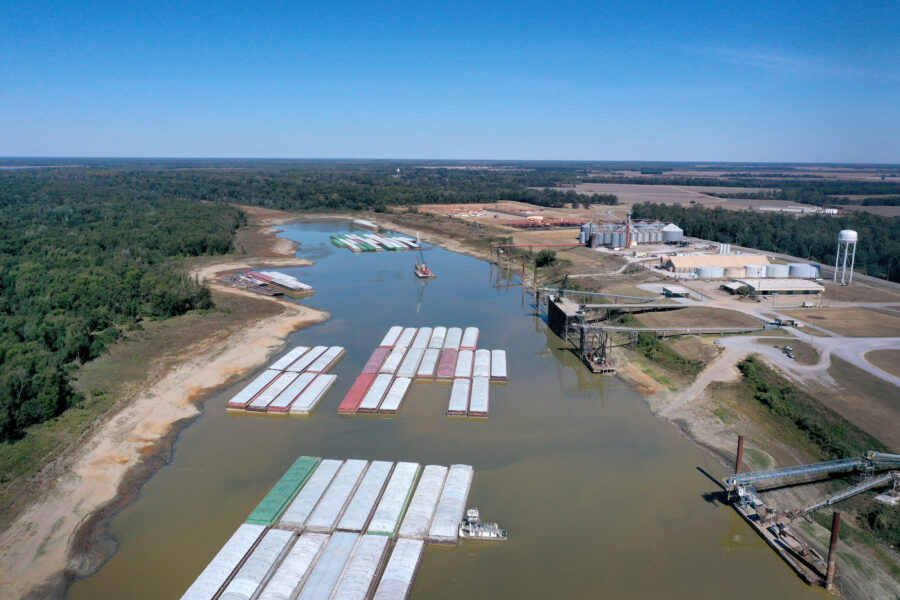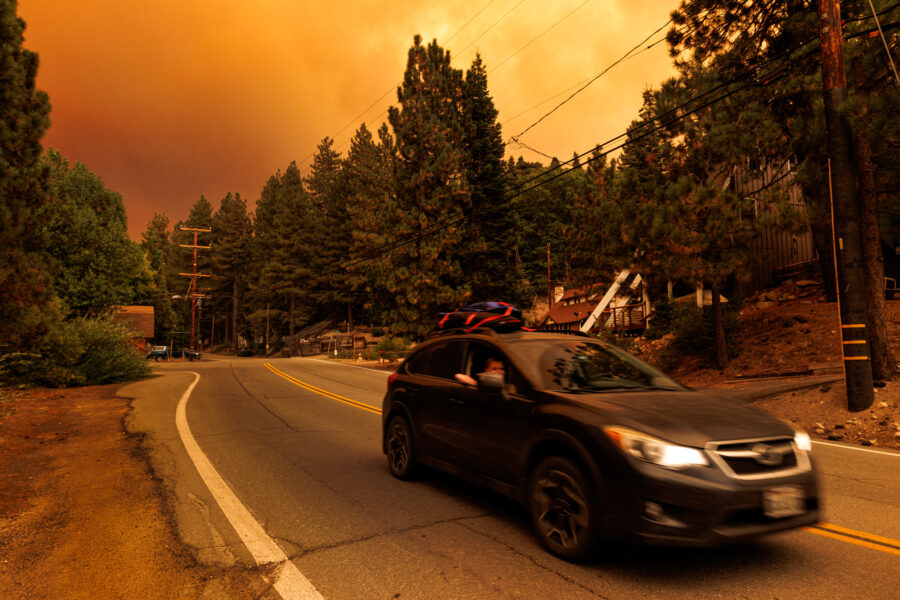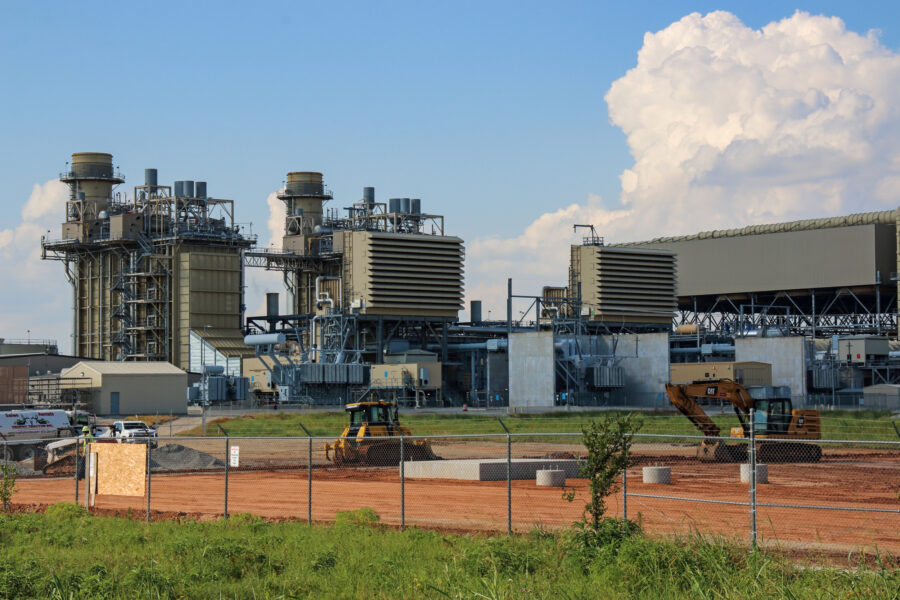In the Park Fire, an Indigenous Cultural Fire Practitioner Sees Beyond Destruction
Where others might see only catastrophe, Don Hankins scans fire-singed landscapes for signs of renewal.
Hankins, a renowned Miwkoʔ (Plains Miwok) cultural fire practitioner and scholar, has kept an eye on the Park Fire’s footprint as it sweeps through more than 429,000 acres across four Northern California counties. It started late last month and became one of the largest fires in state history in a matter of days, fueled by dry grasslands. The fire has since risen into the Sierra Nevada foothills, burning through chaparral shrub to reach the mixed conifer belt of the Lassen National Forest. Timber has become its latest energy source.
Yet Hankins says he is seeing some signs of a landscape resilient to fire in areas where he and his team of researchers at California State University, Chico have been able to bring back to the land “good fire” that reduces the potential for destructive wildfires, maintains ecological diversity and holds cultural and spiritual significance for many Indigenous tribes. It is a practice known as cultural burning.
Explore the latest news about what’s at stake for the climate during this election season.
“The Park Fire is burning in a landscape that I have very intimate knowledge of,” Hankins said. That knowledge is rooted in Indigenous land stewardship, a philosophy that he explains in a new essay published by the National Academy of Sciences, in which he argues for a fundamental shift in how we manage land in a time of climate crisis.
He identifies prohibitions on Indigenous cultural fires as some of the most destructive ecological policies in history for both Native cultures and the lands they traditionally stewarded. “Indigenous communities often recognize colonization as the beginning of the climate crisis,” Hankins wrote. “Spanish, Mexican, and American governments enacted policies enabling private ownership of land and forbidding Indigenous peoples from setting fires—often with extreme penalties (i.e., death).” A complex web of state and federal laws continues to severely limit cultural burning.
In an interview, Hankins described his hope of sharing solutions for ecological advancement using Indigenous knowledge, and lifting policy barriers to cultural burning.
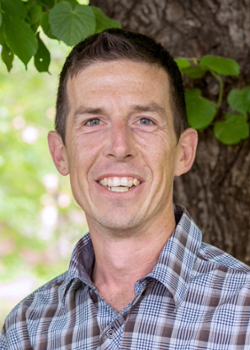
“An example of Indigenous stewardship which we don’t necessarily see at scale is the use of fire,” he said. “We know from settler accounts and even the accounts of elders within our communities that the knowledge [of cultural burning] has been passed down from generation to generation, and that the practices of stewardship helped to minimize the spread of wildfires and to regain biodiversity within the landscape.”
He sees the promise of Indigenous stewardship borne out in lands where the Park Fire has left its mark.
The fire started in a Chico city park and spread northeast through lands preserved for research by the local university, called the Big Chico Creek Ecological Reserve. Hankins and other Indigenous practitioners have been applying good fire there since 2009. Over two- to five-year intervals, they have burned off invasive, non-native grasses and accumulated debris with cultural fires.
“It’s all based off of seeing what the land needs,” Hankins said. He calls the technique “reading the landscape,” best captured by the Plains Miwok word ʔElelte, which refers to the practice of “reading” in all its sensorial forms: “sight, smell, sound, touch, taste, and the sixth sense of spirit or intuition of life force.”
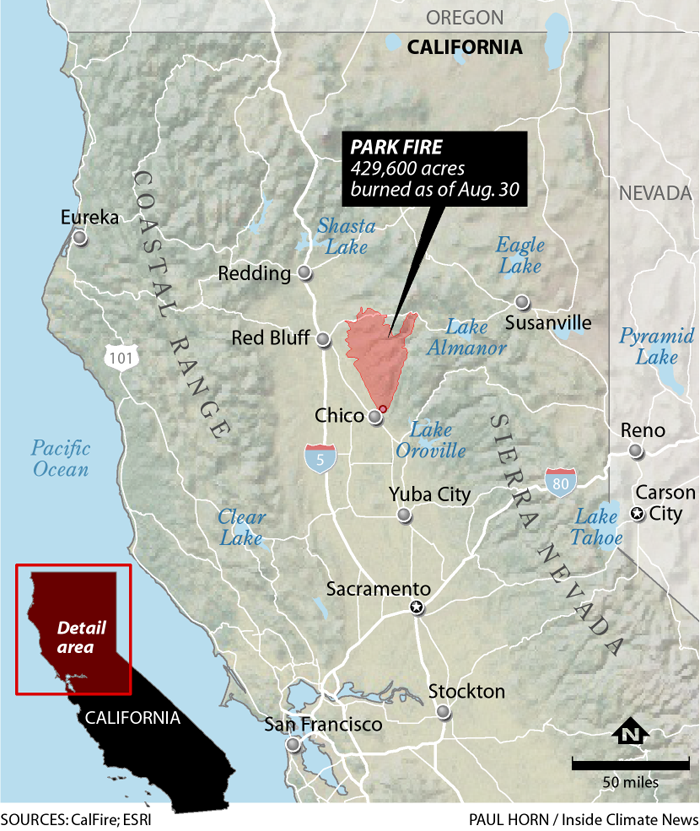
Hankins says he sees plants regenerating in soils where the Park Fire passed through weeks ago, and that had been maintained through culturally informed fire practices. He sees milkweed patches beginning a cycle of renewal, for example—a plant that, he points out, holds deep cultural significance to Native peoples for its use in textiles, food and medicine. The reserve’s oak woodlands also appear to have withstood the ravages of wildfire.
Hankins acknowledges that these are fine-grained, emerging success stories, emblematic of one of the dilemmas of cultural burning. He, like other Native practitioners, cannot apply fire to the landscape at a significant scale due to the array of policy barriers to Indigenous fire practices. “We’re talking maybe a 10-acre patch here, a 30-acre patch there, a hundred acres there,” he said. “You can’t work within the landscape scale to really effect the change that needs to take place.”
If Indigenous fire practitioners had been allowed to steward the lands that the Park Fire has now claimed, Hankins said, they would have worked to eliminate the dominance of the dry, non-native grasses that fed the wildfire and drove it up into the hills. “If we were stewarding the landscape at scale and had more native species dominance, there would probably have been greater resistance to that fire movement,” he said.
Melinda Adams, a member of the N’dee San Carlos Apache tribe and professor at the University of Kansas who worked alongside cultural burn practitioners in California, said that the Park Fire is “a stark reminder of the work that our community members are doing.”
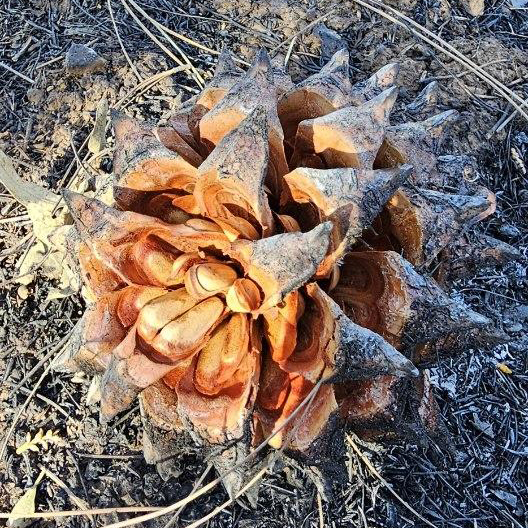
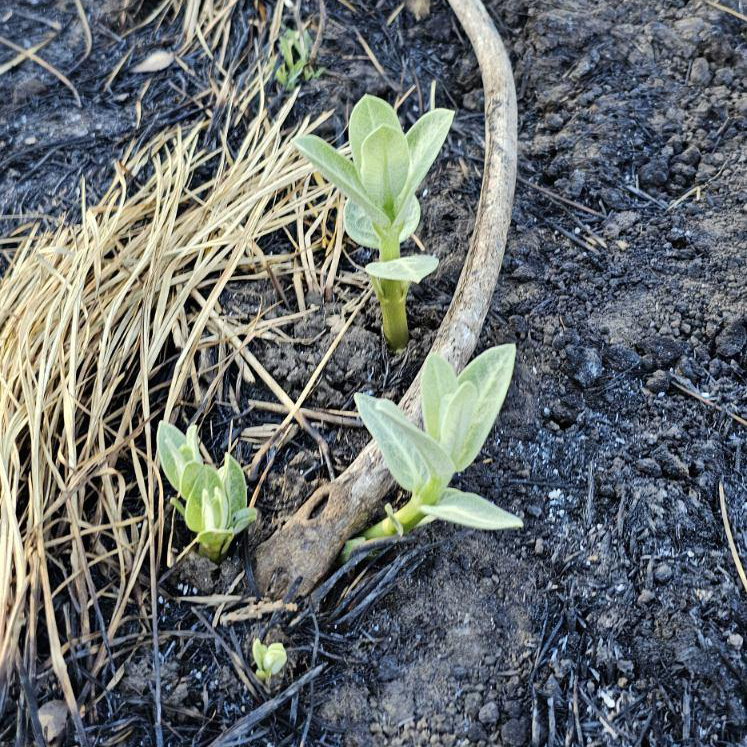
A grey pine cone opens to reveal seeds and milkweed regenerates within nine days of cultural burning on the Big Chico Creek Ecological Reserve. Credit: Don Hankins
“As an Indigenous person, I know those homelands belong to many different tribes who are not only losing structures or homes, but also losing important cultural resources, the landscape they call home and the cultural connection to these places,” she said. “Don is an important person, scholar, researcher and Indigenous practitioner in the return of fire, and a lot of us look to him for leadership with the cultural connections with revitalizing this practice. We also look to him as an indigenous scholar that is informing Western scientists of the importance of cultural fire.”
Since Hankins began publishing research on Indigenous fire practices more than two decades ago, Western fire ecologists have begun to recognize the overlooked role of Indigenous cultural burning within ecosystems. Studies have found evidence that cultural burns helped to preserve California forests, for example. In a study examining global warming’s impact on prescribed fires—fires lit with the goal of eliminating excess vegetation that could worsen wildfire and improving forest health and biodiversity—researchers called for the removal of regulatory barriers to Indigenous cultural burning, to help mitigate the wildfire crisis.
In a 2022 strategy report titled “Confronting the Wildfire Crisis,” the U.S. Forest Service called for a “paradigm shift in land management” that included a four-fold increase in prescribed burns across the American West. Yet Indigenous cultural burning, despite holding many of the same objectives as prescribed fires, remains prohibited across federal lands.
A September 2023 Biden administration report on wildfire mitigation called for reassessing federal regulations that hinder Tribal fire programs nationwide. Hankins released a report in March, in answer to the Biden report, analyzing the federal barriers to cultural burning, with recommendations for revision.
Timothy Ingalsbee, a wildland fire ecologist who teaches at the University of Oregon, has found inspiration in Hankins’ work. He co-founded a nonprofit, Firefighters United for Safety, Ethics, and Ecology, with the goal of fostering resilient ecosystems in fire-prone environments, in partnership with Indigenous fire practitioners.
“Government agencies are still stuck in an old paradigm of asserting management control over the land base,” he said. “Fire management, since the inception of the Forest Service, has been all about fire exclusion, fire suppression.” Indigenous cultural burns, by contrast, seek to return fire to the landscape to maintain abundant ecosystems and cultural resources.
That philosophical divide lives alongside the pain of forced assimilation, Indigenous fire practitioners say. The Honorable Ron Goode, chairman of the North Fork Mono Tribe in Northern California, has written about the restorative effects of cultural burning, and has worked to bring cultural fire back to both Tribal and privately owned lands in California.
“All the Tribes have knowledge about what their ancestors did, or even that their elders burned when they were young. But today, they’re still too afraid. I have people in my Tribe who will come up to me and say, ‘You better stop what you’re doing because you’re going to get into trouble.’ And they’re not just talking about CAL FIRE giving me a ticket,” he said, in reference to the California Department of Forestry and Fire Protection. “They’re talking about the government coming after us or taking it out on our people because of what I’m doing, because this is what happened in the past.”
Hankins remains vigilant to the landscape. His family was evacuated from their home near Chico at the start of the wildfire, and returned when evacuation orders were lifted a week later. It wouldn’t take much for the fire to return, he said.
He sees signs of climate fatigue in his teenage children, who hold painful memories of their last evacuation, during the 2018 Camp Fire. He feels it in himself sometimes, too, as he surveys their carefully packed boxes of cherished cultural objects and artwork. “At what point do you decide to unpack and put things back? We still have a long fire season ahead of us,” he said.
“But our plan is, as a community, to do what we’ve been doing all along: to do more active fire, and to scale it—hopefully within that green footprint in the next couple seasons.”
About This Story
Perhaps you noticed: This story, like all the news we publish, is free to read. That’s because Inside Climate News is a 501c3 nonprofit organization. We do not charge a subscription fee, lock our news behind a paywall, or clutter our website with ads. We make our news on climate and the environment freely available to you and anyone who wants it.
That’s not all. We also share our news for free with scores of other media organizations around the country. Many of them can’t afford to do environmental journalism of their own. We’ve built bureaus from coast to coast to report local stories, collaborate with local newsrooms and co-publish articles so that this vital work is shared as widely as possible.
Two of us launched ICN in 2007. Six years later we earned a Pulitzer Prize for National Reporting, and now we run the oldest and largest dedicated climate newsroom in the nation. We tell the story in all its complexity. We hold polluters accountable. We expose environmental injustice. We debunk misinformation. We scrutinize solutions and inspire action.
Donations from readers like you fund every aspect of what we do. If you don’t already, will you support our ongoing work, our reporting on the biggest crisis facing our planet, and help us reach even more readers in more places?
Please take a moment to make a tax-deductible donation. Every one of them makes a difference.
Thank you,
David Sassoon
Founder and Publisher
Vernon Loeb
Executive Editor
Share this article
Disclaimer: The copyright of this article belongs to the original author. Reposting this article is solely for the purpose of information dissemination and does not constitute any investment advice. If there is any infringement, please contact us immediately. We will make corrections or deletions as necessary. Thank you.

